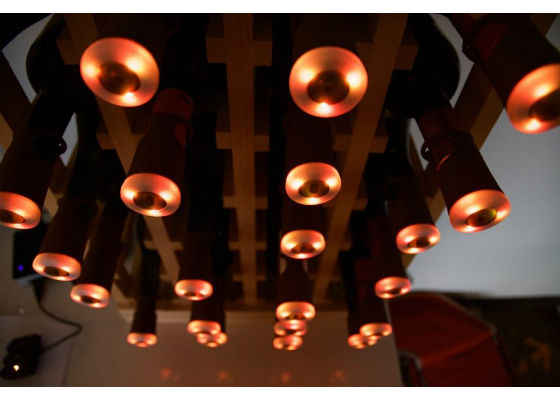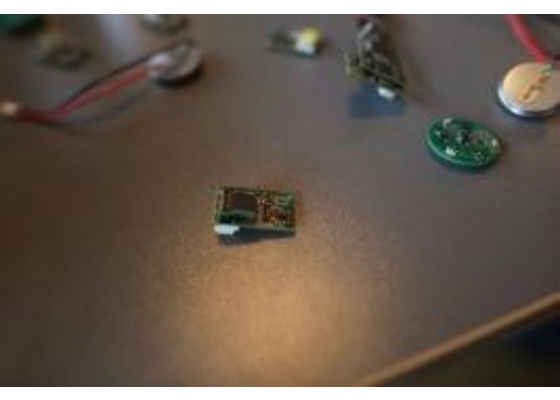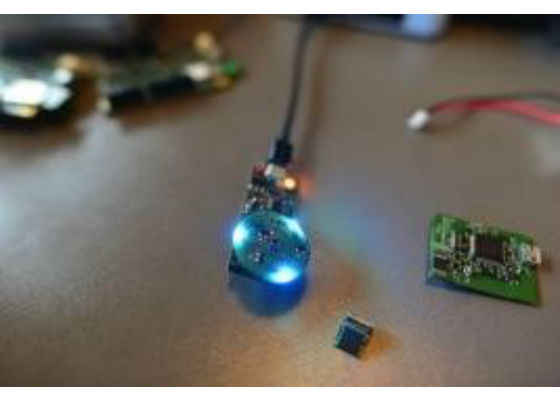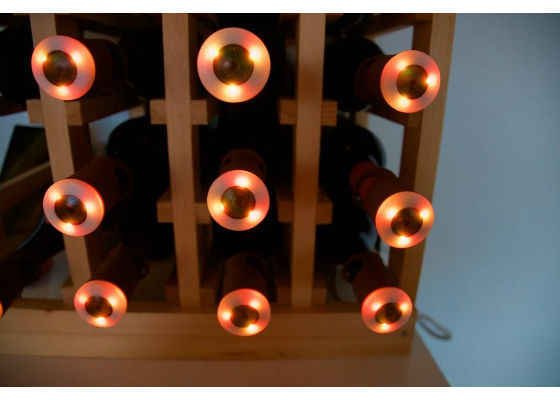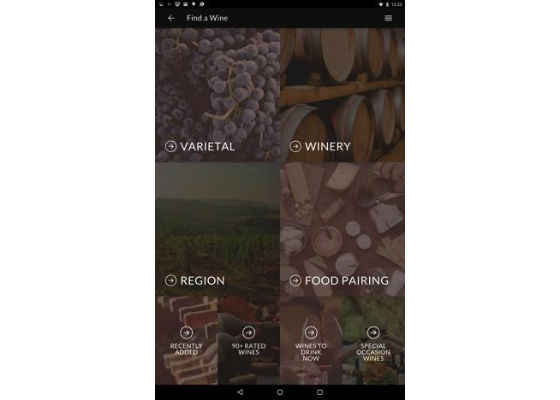Use Case: Intel Edison to Microsoft Azure Part 2
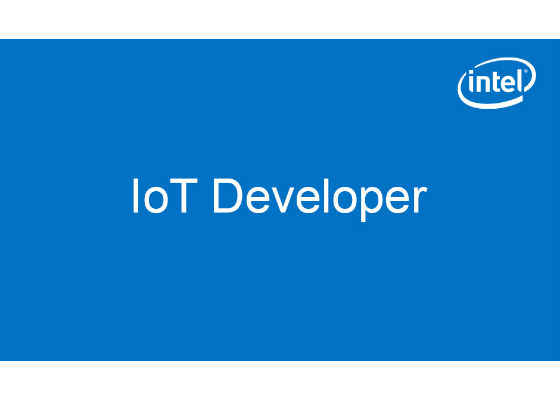
Asset tracking is a challenge that seems tailor-made for an Internet of Things solution. Imagine sensors connected to a tiny IoT processor that can be mounted on shipping crates, or on individual objects lining the shelves of a retail operation or private home. The sensors collect data–location, temperature, movement, sales or consumption details, for example–and pass it into the cloud where that data can be sliced, diced, and fed into a recommendation engine. Tapping into the engine then helps someone make an informed decision based on what’s trending, under what circumstances the product will be consumed, and what to expect when they try it for themselves.
Intel® had been exploring that premise, looking at ways in which Intel® Edison™ technology, Intel® Quark™ processors and microcontrollers could be used to prototype just such a system.
Recognizing that a Portland, Oregon-based design company was focusing on the same opportunity, Intel reached out to Uncorked Studios*. “We brought them to an invitation-only development day,” Intel IoT innovation manager Shashi Jain explained. “Our goal was very specific. We wanted to collaborate with them, to demonstrate how Intel IoT technology can be used to quickly take an idea from concept to prototype, and ultimately to market.”
A connoisseur’s collection fitted with Sommely caps.
For Uncorked Studios, that idea was a product called Sommely (from sommelier, or wine steward). WithSommely, the luxury wine market served as the vector for proving that a smart asset-tracking system for wine enthusiasts could scale from the domestic wine rack to restaurants, wineries, and beyond.
Uncorked Studios
The aptly named Uncorked Studios* is a product design and development company, which, for the six years of its existence, has been focused on “the relationship between digital environments and the physical world.” The company’s team of 42 has created smart-home and wearable products in collaboration with LEGO*, Google*, adidas*, and Samsung*, among others. Working with Intel, Uncorked Studios* helped design the multi-camera array used in the Intel® RealSense™ launch.
Sommely* is Uncorked Studios’ first foray into the wine and asset-tracking market.
The Sommely* Experience
As a smart inventory-management system for wine collectors, Sommely uses several Intel IoT components to keep a running count of what’s in a particular wine collection. The system can also make smart recommendations by drawing on crowd-sourced data to suggest what to drink, when a bottle is ready to drink, and the food it pairs well with.
To accomplish that, a mobile-friendly website communicates with a gateway or a hub that’s connected to the Internet via Wi-Fi. The hub also communicates with individual caps fitted to each of the bottles in a wine collection. The caps hold batteries, a radio that talks to the hub, sensors, and LED lights.
“Say it’s a Tuesday night, and you’ve just ordered pizza,” Marcelino Alvarez, the founder and CEO of Uncorked Studios, explained. “You don’t want to accidentally open a bottle that’s rare, or too expensive. You just want something that pairs well with your pepperoni and mushroom pizza, so you ask the app and the corresponding caps light up, letting you do a visual search through your inventory.”
Along similar lines, the Sommely app gives users the ability to choose wines for special occasions, based on criteria that includes the food the wine is being paired with, the characteristic elements you’re looking for (light and crisp, big and jammy, etc.), and whether a particular bottle is ready to be enjoyed now or if it needs more time in the cellar. The system will also warn when a bottle is past its prime.
The crowd-sourced component, like Sommely itself, is a work-in-progress. Alvarez’s goal is for their app to “play nice with other apps”.
“We’re not competing with apps like Delectable Wines* or Vivino*, so we could partner with them.” He envisions getting data that includes a large sampling of what wine lovers are drinking at any given moment, along with data such as industry and consumer reviews and tasting notes. Sommely could aggregate and present that information in ways that encourage curiosity and exploration.
What does Sommely have that other systems don’t? Traditional, analog inventory systems that use things like spreadsheets and post-it notes, or tags that hang around the neck of each bottle, have drawbacks. “For example, they require a lot of individual attention,” Alvarez pointed out. “You need to write down drink-by dates, assuming you even have that information.” Another disadvantage is that manual systems don’t automatically update when you drink a bottle, making it easy to lose track of what’s in the collection.
“Even if you’re diligent about keeping track, you’re inevitably going to forget you drank something. A single misplaced bottle can send you back to square one. If you have 40, 50, or 100 bottles, that might only take you an hour,” Alvarez said. “But if you’ve got 500 bottles, or 1,000 bottles, there are other considerations. For example, sizable collections are more likely to include special bottles–gifts, rare and expensive vintages, and so on.”
How Sommely Works
A low-power, 32-bit Intel® Quark™ microcontroller D1000 resides in each Sommely bottle cap. Uncorked Studios’ engineers leaned heavily on the fine-grained power management features of the Intel Quark microcontroller D1000. Standby mode and fast wake-times helped maximize battery life, which was crucial for a ‘set it and forget it’ solution expected to function for long periods.
Low-power Intel Quark microcontroller D1000s are tiny enough to fit in a bottle cap.
The gateway itself uses an Intel® NUC and a full Ubuntu* Linux* distribution that enables remote system updates. Currently, the caps and gateway communicate using Bluetooth® Low Energy (BLE) technology. BLE is tailored for low-energy IoT devices. “We decided on BLE for a couple of reasons,” Alvarez said. “When prototyping Sommely, we piggybacked some of our engineering efforts with those of a software engineering team at Intel that was working on a BLE solution. That helped us get from concept to prototype much faster than expected.”
As convenient as BLE seemed, Alvarez doesn’t expect it to be part of the final product. Uncorked Studios is still working with Intel to define an active RF or RFID solution, because the initial Sommely prototype showed that scaling beyond 100 bottles to 500 or more could prove challenging. “With a larger collection, BLE interference could make it challenging to pair everything, so we’ll probably build a custom RF stack for Sommely.”
The gateway’s Intel NUC enables discovery of the BLE caps and maintains their connection state over time by periodically scanning and re-scanning, as well as taking Received Signal Strength Indication (RSSI) measurements. The browser-based system interface draws on a library of collection and search queries, and the design provides an upstream connection to Wi-Fi. The Uncorked Studios team has been using Intel-powered Dell* Venue tablets to test-drive Sommely.
Frictionless User Interaction
A lot of technology has gone into Sommely, and, Alvarez says, “we’re looking at ways to create frictionless interaction with the system. We want to keep it simple.” According to Alvarez, the physical components, the context in which they’re being used, and even the BIOS all posed design challenges.
For starters, the gateway needed to blend in. After all, wine enthusiasts want the focus of attention to be on the bottles in their collection, not on a high-tech telecommunications device. As a result, the Intel Quark microcontroller D1000 and the battery are hidden within the Sommely bottle caps, and the gateway is housed in an Intel NUC.
In early trials, at runtime the Dell Venue tablet appears to interact directly with the bottle caps themselves. “That’s because we limited the perceptual distance from the transaction between the tablet, the caps, and the hub. The end user won’t know that we're running Linux, a full BLE stack, and a Wi-Fi network stack with a Node.js* web server. It feels like you go to the system, press a button, and see LEDs light up.”
The Sommelybottle caps supply user feedback through a ring of three LEDs. That presented the UX team with another challenge: developing an intuitive user experience for a device that doesn’t have the traditional elements of a user interface–there’s no screen to display things on other than what’s available through the web app.
Inside each Sommely bottle cap sits three LEDs positioned 120 degrees apart. They change color to give visual feedback.
“One of the interesting things that emerged with IoT is the trend of having a mobile app that acts like an interface to a device that itself provides user feedback on a more intimate level,” Alvarez said. “That holds true for Sommely. Our web app is just a way for people to control an interface to wine bottles, where the bottles themselves become unique elements of that interface. The Sommelycaps fit over the actual wine bottle caps, and respond to input and output from the web app. You can pick up a bottle, tap a button on the Sommely cap, and get feedback through them, as well as display relevant information on the app.”
Sommely bottle caps deliver feedback by lighting up.
UX design decisions were based on context. “Where the bottles would be, relative to the tablet; what happens when you’re out of sight,” Alvarez said. “How do you make the app for the interface something that gets out of the way rather than being in your face? You don't want to be scrolling through an infinite series of menus to just find one wine bottle.”
All of that translated to a solution in which the Intel Quark microcontroller D1000 embedded in each cap responds to user push-button inputs. “We implemented a custom ping-pong soft PWM based on the sample code provided with the Intel SDK to drive the LED ring,” Alvarez explained. “The BLE client state machine converts inbound BLE requests to color, brightness, and off/on. Responses to button pushes can be customized based on a variety of queries. If a user asks to see wines ranging from expensive to less expensive, the color palette spans green to yellow, but for a ‘is it ready to drink right now?’ query, the feedback is a more nuanced color palette.”
Batteries – Maximizing Performance
Battery life was crucial, so the system enters power-saving states whenever possible. “We exploited the halt and standby states in our firmware to put the SoC into power-saving mode whenever it's not needed. The MCU is idle during dead clocks in our PWM states, and whenever the LED ring is off. As a result, we've got the Intel Quark D1000 in standby almost all of the time, which translates to battery life approaching one year with some intermittent use, which is our current method.”
The web app notifies users when batteries need to be replaced, but Alvarez cautions against using Sommely caps to run DJ-style light shows. “There will be people who do that, but we don’t want to encourage it. We’d like to implement conductive charging or an RF harvest state. With enough harvesting, we might be able to extend battery life by a couple years. But those are v2 or v3 features.”
Sommely lets users make smart choices by drawing data from the cloud. The app’s backend is hosted on Amazon Web Services (AWS)*.
With a target audience that holds on to wine for anywhere from a year to three years, Alvarez knows how important extended battery life is. “Cost is the primary issue holding us back. We’re looking at ways to gracefully send new caps to customers as batteries near end-of-life.”
Some wine enthusiasts believe it’s important to annually rotate the bottles in their collections a quarter-turn. Alvarez says they considered using the accelerometer in their sensors and the light ring in the bottle caps to tell users when to turn bottles. “The three LEDs are 120 degrees apart, so we could have lit an LED to signal when it’s time to rotate a bottle, and then turned the LED off when the quarter turn was complete.”
Intel Inside the Software Stack
The Uncorked Studios engineers turned to a number of Intel software development tools when coding Sommely. The gateway runs a custom MEAN stack implementation and Intel® System Studio for Microcontrollers was used to code the Intel Quark microcontroller D1000 firmware.
“Having sample code for the Intel Quark D1000 firmware made a huge difference for us when it came to some of the trickier portions of the system, power management specifically,” Alvarez said.
As a result of the relationships established during the invitation-only developer day, Intel hardware and software engineers helped the Uncorked Studios team with the Intel Quark D1000 firmware. “We were able to get up and running on the Intel Edison NUC very quickly,” Alvarez said. “With the Intel Quark D1000, Intel engineers were able to look at our code and give us input that helped us resolve issues.
When we’ve had challenges or questions, they’ve been right there for us.”
More importantly, Alvarez said, “Intel’s Marc Alexander was an advocate. He saw the potential in Sommely from a broader perspective. He saw beyond the immediate implication of how many chips they might sell, and understood that Sommely was an exciting IoT use case with a lot of potential. If we didn't have believers within Intel, or access to domain experts within various aspects of IoT and the startup world, we wouldn't be where we are today.”
Next Steps
Sommely is a work-in-progress. At the time of writing, enhancements to its power management stack are top-of-mind for Alvarez. “If we could harvest energy and not have to replace batteries, that would be a leaps-and-bounds improvement. I think power management is a challenge all IoT devices are going to face at some point.”
Alvarez envisions solutions ranging from the utilitarian to the glamorous. “We have a few ideas for how we could recharge the caps using either existing induction charging technologies as well as some new approaches that we’re excited to prototype. We think it’s a space where we can continue to partner with Intel to solve a much larger industry challenge.”
In Summary
High-value inventory management—keeping track of valuable things—using IoT technology offers solutions to a lot of challenges. For example, tracking tools in a factory, or keeping tabs on a collection of Star Wars* figures, Barbie* dolls, antiques, and other rare collectibles being shipped across town or across borders, and monitoring the day-to-day life of a wine collection.
Uncorked Studios was in lean, startup mode with Sommely when they started working with Intel IoT technology. Intel hardware and software engineers helped the Uncorked Studios team quickly prototype the smart asset-management solution. The lessons they’ve learned so far, and possible new use cases, hold great potential, especially when scaled to support larger inventories.
“We've looked at different contextual experiences that go beyond one-cap-one-bottle,” Alvarez said. “What could a restaurant or winery do with Sommely? Is there a SKU that just sits on top of a case that holds 12 individual units representing the 12 bottles within? Maybe those units detach and go on the bottles when you crack open the case? We also considered transferring ownership of a bottle and keeping that history in the cap itself. It’d be like an electronic manifest for the bottle. We have thought through a number of scenarios, but aren’t ready to implement them.”
Whatever the future holds for Sommely, it shows how Intel fosters innovation through collaboration with startups. By helping Uncorked Studios overcome technical hurdles and scale Sommely from one to many sensors/caps, Intel gained valuable insights. Those insights, in turn, helped the Intel team refine and enhance Intel’s IoT hardware and software solutions.
If you’ve got a burning desire to change the world with IoT technology, but you’re having technical difficulties, drop by the Intel Developer Zone. Our domain experts, and the developer community at large, might be able to lend a hand.
For more such intel IoT resources and tools from Intel, please visit the Intel® Developer Zone
Source: https://software.intel.com/en-us/articles/use-case-intel-edison-to-microsoft-azure-part-2

